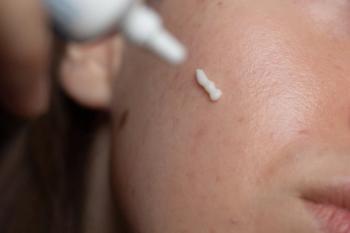
Both Upadacitinib and Abrocitinib Demonstrate Real-World Efficacy in Patients With AD After 1 Year
Key Takeaways
- Upadacitinib and abrocitinib demonstrated efficacy in real-world settings for moderate-to-severe atopic dermatitis, with positive results as early as 8 weeks.
- After one year, both drugs showed high efficacy rates, with abrocitinib achieving slightly better outcomes in some measures.
A real-world study shows the effectiveness of upadacitinib and abrocitinib for moderate to severe atopic dermatitis after 52 weeks of treatment.
Positive retrospective study data have confirmed upadacitinib and abrocitinib's efficacy for moderate to severe atopic dermatitis (AD) in real-world settings.1 Safety and effectiveness have been proven in phase 3 clinical trials, but long-term, real-world results have been limited for these Janus kinase inhibitors.
For this trial, the AD database records of IRCCS Humanitas Research Hospital-Rozzano in Milan, Italy, were utilized. These electronic records were analyzed between January 2023 and December 2024. Information such as demographics, comorbidities, disease profile, and previous treatments was extracted.
Patients received either 15 or 30 mg of upadacitinib (n = 104) or 100 or 200 mg of abrocitinib (n = 25). The dose was determined based on disease severity and age. A washout period of at least 4 weeks was advised before the trial began in those who had previously used systemic therapies for AD.
In the upadacitinib group, 50% of participants were men, and 86.5% experienced AD in at least 1 sensitive area. In the abrocitinib group, 56% of participants were men, and 72% experienced AD in at least 1 sensitive area. The mean ages were 36.65 and 39.56 years, respectively.
Investigator Global Assessment (IGA) and Eczema Area and Severity Index (EASI), along with patient-reported Peak Pruritus Numerical Rating Scale (PP-NRS) and sleep-NRS scores, were used to evaluate at baseline and then weeks 8, 16, 32, and 52. The end points were similar to what was used in previous phase 3 trials for both drugs.
At baseline, patients treated with upadacitinib had a body mass index (BMI) of 23.84, a PP-NRS of 7.58, and a mean baseline EASI score of 19.22. Similarly, patients treated with abrocitinib had a mean BMI of 23.44, a PP-NRS of 7.24, and a mean baseline EASI score of 19.15. Disease duration was slightly longer in the upadacitinib group (23.45 years vs 17.80, respectively).
Positive results were seen in both cohorts as early as 8 weeks into the trial. These rates continued to rise through weeks 16 and 32. However, patients treated with abrocitinib at the same time point were less likely to achieve complete skin clearance (EASI-100) compared with those treated with upadacitinib (P = .017)
After 1 year of treatment with upadacitinib, 88.9% reached EASI-75, 70.8% reached EASI-90, and 54.2% reached EASI-100. After 1 year of treatment with abrocitinib, 100% reached EASI-75, 91.7% reached EASI-90, and 75% reached EASI-100.
After 52 weeks, 100% of patients taking abrocitinib reached IGA 0/1 compared with 84.7% of patients taking upadacitinib. However, for the entire study, there were no statistically significant differences between the 2 cohorts regarding an absolute EASI score of less than or equal to 7 and an IGA score of 0/1. Compared with baseline, a 4-point reduction from PP-NRS was observed in 86.1% of patients receiving upadacitinib and 83.3% of those receiving abrocitinib after 1 year.
Previously reported and frequent adverse effects of abrocitinib include nausea, elevated serum creatine phosphokinase (CPK), and a decrease in platelet count.2 In this study, acne and hypercholesterolemia were observed. Previously reported and frequent adverse effects of upadacitinib include acne, upper respiratory tract infections, nasopharyngitis, headache, and elevation of CPK.3 In this study, weight gain, microcomedonal acne, hypercholesterolemia, and herpes zoster infections were observed. No new safety findings were discovered in either group.
Several limitations, such as the retrospective study design and limited number of patients treated with abrocitinib, should be addressed in future research. Even so, these efficacy rates are similar or even higher than what was observed in phase 3 trials of each drug, including Measure Up 1, Measure Up 2, and JADE MONO-1. This study represents one of the largest and longest reported real-world AD populations to date.
References
1. Ibba L, Falcidia C, Di Giulio S, et al. Real-world effectiveness and safety of upadacitinib and abrocitinib in moderate-to-severe atopic dermatitis: a 52-week retrospective study. J Clin Med. 2025;14(9):2953. doi:10.3390/jcm14092953
2. Simpson EL, Sinclair R, Forman S, et al. Efficacy and safety of abrocitinib in adults and adolescents with moderate-to-severe atopic dermatitis (JADE MONO-1): a multicentre, double-blind, randomised, placebo-controlled, phase 3 trial. Lancet. 2020;396(10246):255-266. doi:10.1016/S0140-6736(20)30732-7
3. Guttman-Yassky E, Teixeira HD, Simpson EL, et al. Once-daily upadacitinib versus placebo in adolescents and adults with moderate-to-severe atopic dermatitis (Measure Up 1 and Measure Up 2): results from two replicate double-blind, randomised controlled phase 3 trials. Lancet. 2021;397(10290):2151-2168.
Newsletter
Like what you’re reading? Subscribe to Dermatology Times for weekly updates on therapies, innovations, and real-world practice tips.


















